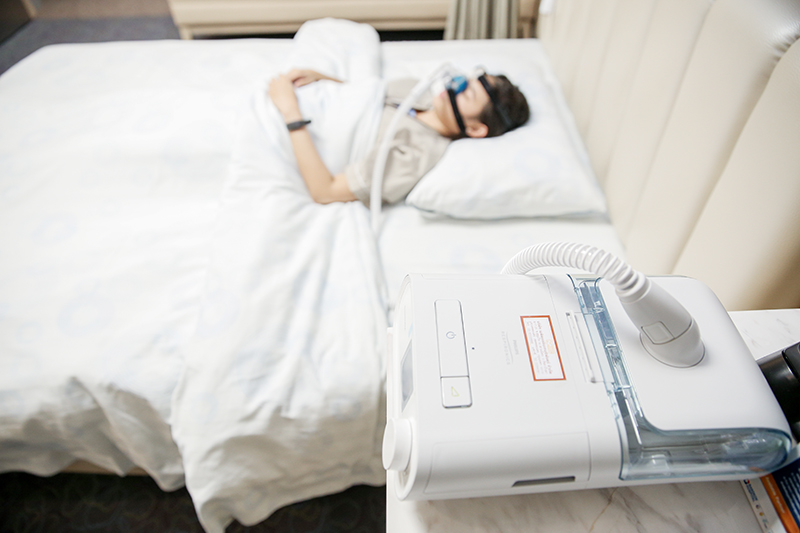What is Snoring?
Snoring occurs during sleep when the neck muscles relax and slacken, causing the airway to narrow. The air passing through the narrowed airway causes the throat tissues such as the tonsils, soft palate, and uvula to vibrate. This vibration leads to the sound of snoring. Besides the relaxation of the neck muscles, there are other causes for the narrowing or blockage of the airway, such as enlarged tonsils, excess tissue in the neck for significantly overweight patients, a large tongue, or tumors and cysts of the upper respiratory tract. Therefore, snoring is a sign that the patient may have abnormalities in the respiratory system.
What is obstructive sleep apnea (OSA)?
Aside from snoring during sleep, it’s also found that it may be accompanied by episodes of stopped breathing when throat tissues or the tongue relax and block the upper airway. The body attempts to breathe more deeply to allow air to pass through the narrowed airway, causing it to narrow further until completely sealed, similar to sucking a piece of food through a straw where the food stalls at the end of the straw, preventing passage. In this metaphor, the food represents air. When air cannot pass through the sealed airway, the body cannot bring oxygen into the body. When the brain lacks oxygen, it causes the patient to wake up gasping or coughing strongly to reposition the tongue, during a sleep cycle, there may be several instances of snoring and apnea, resulting in insufficient sleep and inadequate oxygen supply to the brain.
Treatment for Snoring and Sleep Apnea
In cases where the patient’s symptoms are mild, behavioral changes and lifestyle adjustments may help improve the situation, such as weight loss, exercise, avoiding alcohol or eating 3 hours before bedtime. If the patient has moderate to severe conditions, additional treatments are necessary, such as surgery on throat tissues, jaw, tongue, or uvula to help open the airway wider. The use of a continuous positive airway pressure (CPAP) titration machine, which is currently considered the best method, is also an option. Additionally, oral appliances are also available. When choosing any treatment method, the severity, suitability, and patient cooperation will be considered. Patients should consult a doctor for further diagnosis, such as sleep testing (polysomnography) to assess sleep quality and the severity of the condition.
What are Oral Appliances?
Oral appliances used for treating snoring and sleep apnea are made from acrylic for use in the mouth, similar to orthodontic retainers or splints for patients with bruxism. The oral appliances prevent throat tissue from slackening during sleep, thus preventing airway obstruction. Oral appliances are less bothersome than using a CPAP machine, reduce the risk from surgery, and are cheaper. However, their effectiveness is contingent upon the patient having light to moderate levels of sleep apnea.
There are various types of oral appliances, operating on 3 principles:
- Repositioning the lower jaw forward
- Repositioning the tongue forward
- Lifting the soft palate and uvula higher
Snoring is a common sleep problem encountered frequently. Besides causing annoyance to others, snoring can lead to a host of abnormalities in the patient’s body, such as daytime fatigue, decreased cognitive function, an elevated risk of high blood pressure, heart and vascular diseases, and decreased sexual performance. If you have symptoms of snoring or suspect sleep apnea, it’s crucial to get diagnosed, assess the severity, and consider appropriate treatment options. This will help reduce the risk of various diseases and improve the patient’s quality of life.
For more information, please contact
Neuroscience Center
Monday – Friday 07.00 a.m. – 06.00 p.m.
Saturday – Sunday 07.00 a.m. – 05.00 p.m.

